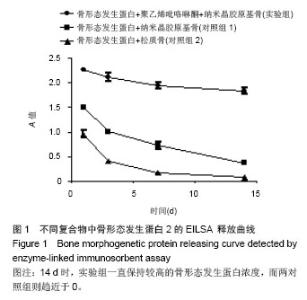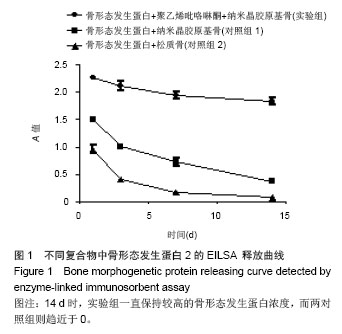| [1]Urist MR, Nilsson O, Rasmussen J,et al. Bone regeneration under the influence of a bone morphogenetic protein (BMP) beta tricalcium phosphate (TCP) composite in skull trephine defects in dogs.Clin Orthop Relat Res.1987;(214):295-304.
[2]Hamanishi C,Kitamoto K,Tanaka S,et al.A self-setting TTCP-DCPD apatite cement for release of vancomycin.J Biomed Mater Res.1996;33(3):139-143.
[3]Otsuka M,Sawada M,Matsuda Y,et a1Antibiotic delivery system using bioactive bone cement consisting of Bis-GMA/ TEGDMA resin and bioactive glass ceramics. Biomaterials. 1997;18(23):1559-1564.
[4]Winn SR,Uludag H,Hollinger JO.Carrier system for BoneMorphogenetics Proteins.Clin Orthop Relat Res. 1999;(367 Suppl):S95-106.
[5]Fernández E,Ginebra MP,Boltong MG,et al.Kinetic study of the setting reaction of a calcium phosphate bone cement.J Biomed Mater Res.1996;32(3):367-374.
[6]Laffargue P,Hildebrand HF,Rtaimate M,et al.Evaluation of human recombinant bone morphogenetic protein-2-loaded tricalcium phosphate implants in rabbits' bone defects.Bone. 1999;25:55-58.
[7]Ducy P,Karsenty G.The family of bone morphogenetic proteins.Kidney Int.2000;37(6):2207-2214.
[8]Schmidmaier G, Wildemann B, Cromme F,et al. Bone morphogenetic protein-2 coating of titanium implants increases biomechanical strength and accelerates bone remodeling in fracture treatment: a biomechanical and histological study in rats. Bone.2002;30(6):816-822.
[9]Hirata K,Tsukazaki T,Kadowaki A,et al.Transplantation of skin fibroblasts expressing BMP-2 promotes bone repair more effectively than those expressing Runx2.Bone. 2003;32(5): 502-512.
[10]张纲,卢来春,裘松波,等.rhBMP-2-PLA纳米微球的制备及生物学效应观察[J].口腔颌面外科杂志,2006,16(4):300-306.
[11]任高宏,裴国献,王钢,等.成人骨髓成骨细胞体外培养[J].骨与关节损伤杂志,2003,18(2):118-121.
[12]黄永辉.沈铁城,徐晓峰.纳米羟基磷灰石/胶原骨在骨折后骨缺损中的应用[J].江苏大学学报:医学版,2004,14(4):292-294.
[13]de Jong DS,Steegenga WT,Hendriks JM,et al.Regulation of Notch signaling genes during BMP2-induced differentiation of osteoblast precursor cells.Biochem Biophys Res Commun. 2004;320(1):100-107.
[14]Ruhé PQ,Kroese-Deutman HC,Wolke JG,et al.Bone inductive properties of rhBMP2 loaded porous calcium phosphate cement implants in cranial defects in rabbits.Biomaterials. 2004;25:2123-2132.
[15]国家药典委员会.中华人民共和国药典(2010年版2部)[M].北京:化学工业出版社,2005.
[16]Chu TM,Sargent P,Warden SJ,et al.Preliminary evaluation of a load-bearing BMP-2 carrier for segmental defect regeneration.Biomed Sci Instrum. 2006;42:42-47.
[17]Hyun SJ,Han DK,Choi SH,et al.Effect of recombinant human bone morphogenetic protein-2,-4, and-7 on bone formation in rat calvarial defects.J Periodontol. 2005;76(10):1667-1674.
[18]何京涛.生物降解药物控释体系中分子扩散行为及药物释放动力学研究[D].北京化工大学,2005.
[19]Reiser J,Zhang XY,Hemenway CS,et al.Potential of mesenchymal stem cells in gene therapy approaches for inherited and acquired diseases. Expert Opin Biol Ther. 2005; 5(12):1571-1584.
[20]Hoshino M,Egi T,Terai H,et al.Repair of long intercalated rib defects using porous beta-tricalcium phosphate cylinders containing recombinant human bone morphogenetic protein-2 in dogs.Biomaterials.2006;27(28):4934-4940.
[21]张炫,张春莲.GLI基因与肢体发育相关性的研究进展[J].国际遗传学杂志,2006,29(5):393-396.
[22]Warzecha J,Göttig S,Brüning C,et al.Sonic hedgehog protein promotes proliferation and chondrogenic differentiation of bone marrow-derived mesenchymal stem cells in vitro.J Orthop Sci.2006;11(5):491-496.
[23]Seeherman HJ,Azari K,Bidic S,et al.rhBMP-2 delivered in a calcium phosphate cement accelerates bridging of critical-sized defects in rabbit radii.J Bone Joint Surg Am. 2006; 88(7):1553-1565.
[24]范 伟,王东.骨形态发生蛋白缓释载体的研究进展[J].中国药物与临床,2007,7(8):620-622.
[25]Ozeki N,Jethanandani P,Nakamura H,et al.Modulation of satellite cell adhesion and motility following BMP-2 induced differentiation to osteoblastlineage.Biochemical Res Communications.2007;353:54-59.
[26]Jimbo R,Sawase T,Shibata Y,et al.Enhanced osseointegration by the chemotactic activity of plasma fibronectin for cellular fibronectin positive cells.Biomaterials. 2007;28(24): 3469-3477.
[27]Foppiano S,Hu D,Marcucio RS.Signaling by bone morphogenetic proteins directs formation of an ectodermal signaling center that regulates craniofacial development.Dev Biol.2007;312(1):103-114.
[28]徐晓峰,马鹏,钱栋,等.骨髓间充质干细胞与不同基质修饰的纳米晶胶原基骨体外生物相容性研究[J].中国生物医学工程学报, 2008,27(6):894-899.
[29]胡金玺,曾伟,罗远明,等.纤维连接蛋白降解产物对软骨破坏作用机制研究进展[J].国际骨科学杂志,2009,29(2):81-85.
[30]Kantola AK,Keski-Oja J,Koli K.Fibronectin and heparin binding domains of latent TGF-beta binding protein (LTBP)-4 mediate matrix targeting and cell adhesion.Exp Cell Res. 2008; 314(13):2488-500. |

